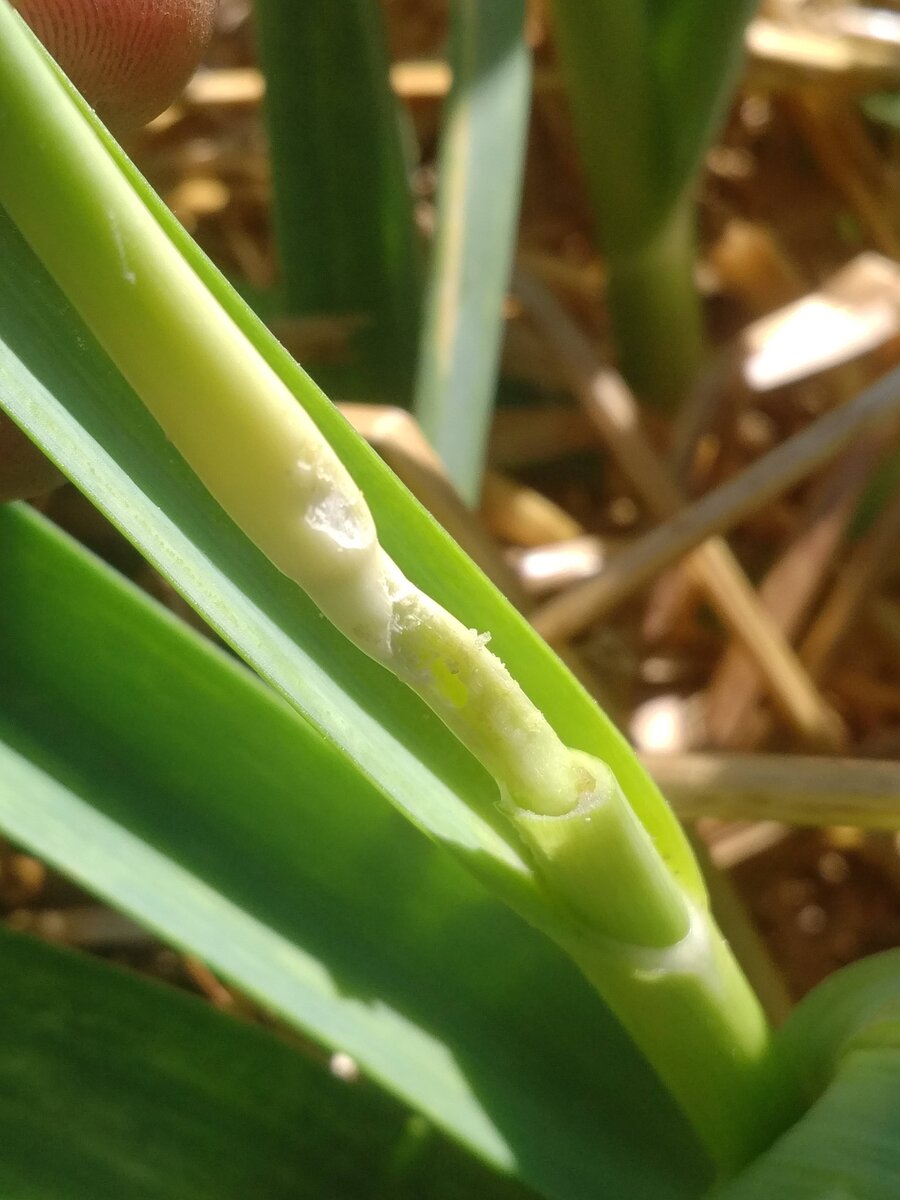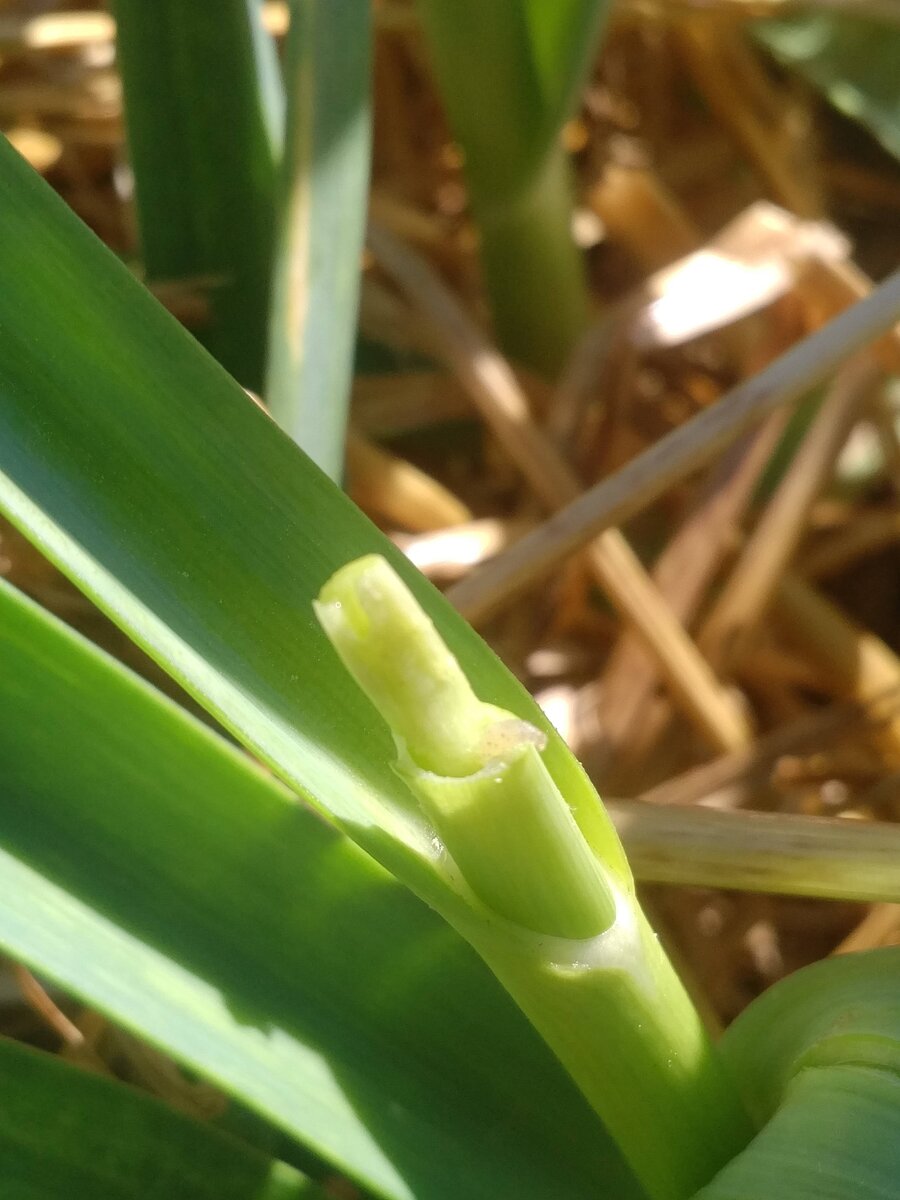The Leek Moth, also known as Acrolepiopsis assectella is a relatively new pest in eastern Canada. In the 1990s it was only found in a few places in Ontario, then it gradually spread, and now it has become a major problem for leek, onion, and garlic growers throughout Ontario, Quebec, and the Maritimes.
Leek moths are nocturnal, so you might not see them flying around. They lay eggs on garlic, onion, and leek leaves at night in late spring. A few days later the eggs hatch and the larvae chew ragged holes in the leaves, then they hide in the stem. June is the best time to inspect your garlic for tell-tale holes in the leaves because if you're diligent you can eliminate the moths before they repeat their life cycle.
The moths go through three full cycles of adult-egg-larva-pupa-adult each year, and the final generation of adults overwinter in plant debris. That means you have three chances to find the moth larvae before they reproduce. It also means that garden cleanup at the end of the year is important - don't leave old parts of leeks, onions, or garlic where you might plant them again next year. Tilling and burying the remnants is better than leaving them in a pile. Also, some research suggests that the overwintered adults only fly about 200m to find new plants in the spring, so planting leeks, onions, and garlic far away from the previous year's location can greatly reduce the moth population.
How to Get Rid of Them
This method is for small garden plots of garlic, not farms. If you have time to look at every plant and catch the moth larvae as they feed, then there's no need to spray anything. In larger plantings, a more comprehensive pest-management program is needed.
You'll never catch all the adults as they fly around at night, and you'll never spot all the tiny eggs on the undersides of the garlic leaves, but you can easily locate the larvae from the damage they cause and they don't move fast so they're easy to catch.
1. Leek moth damage looks like a ragged, long hole on a garlic leaf. A moth larva eats the leaf, and moves down toward the stem where it hides.
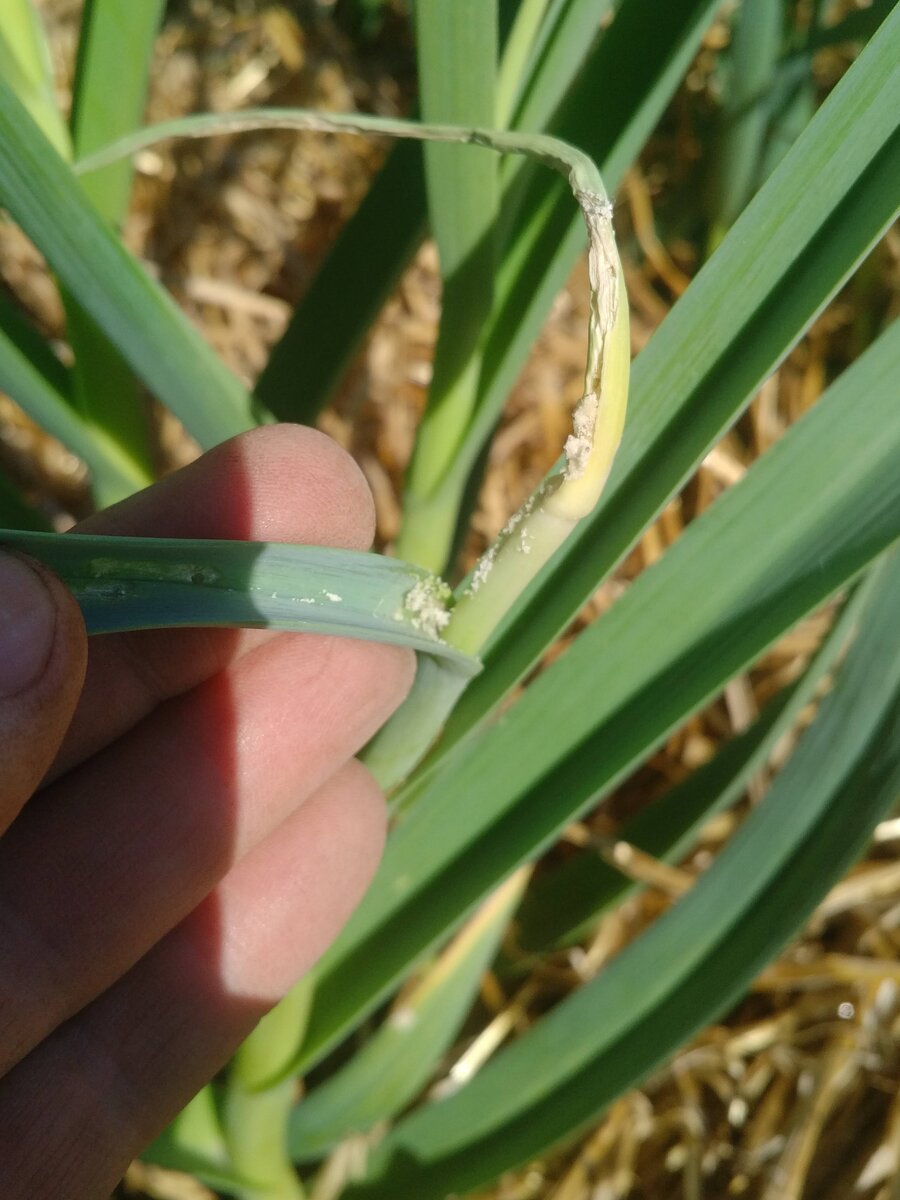
2. When you spot a damaged leaf, peel it back at the stem and you'll almost always find one or two pale-green larvae. Don't worry if you damage the leaf while you peel it back. The garlic plant will gladly grow more leaves to thank you for your help.
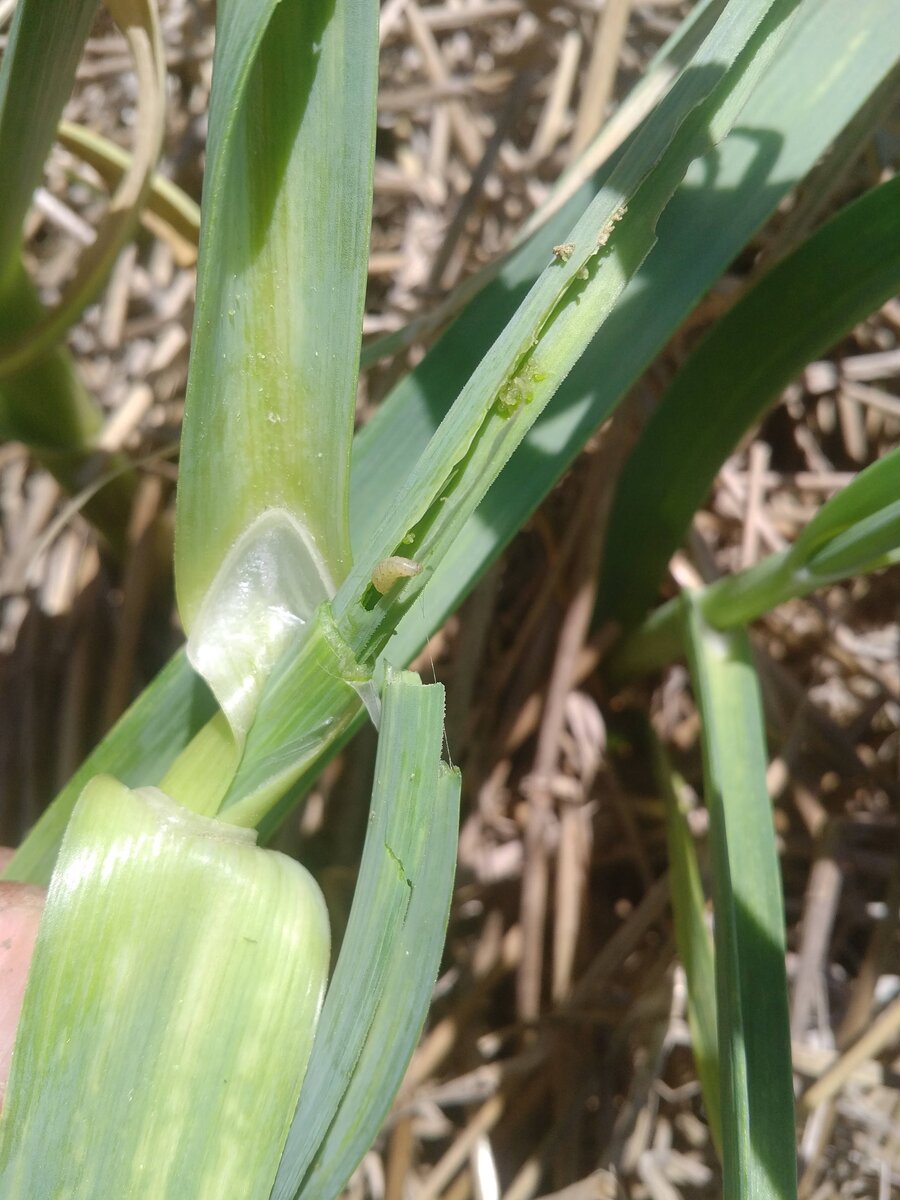
3. Sometimes a larva will have formed a pupa (a tiny webbed cocoon), but it will be in the same place where the leaf wraps around the stem.
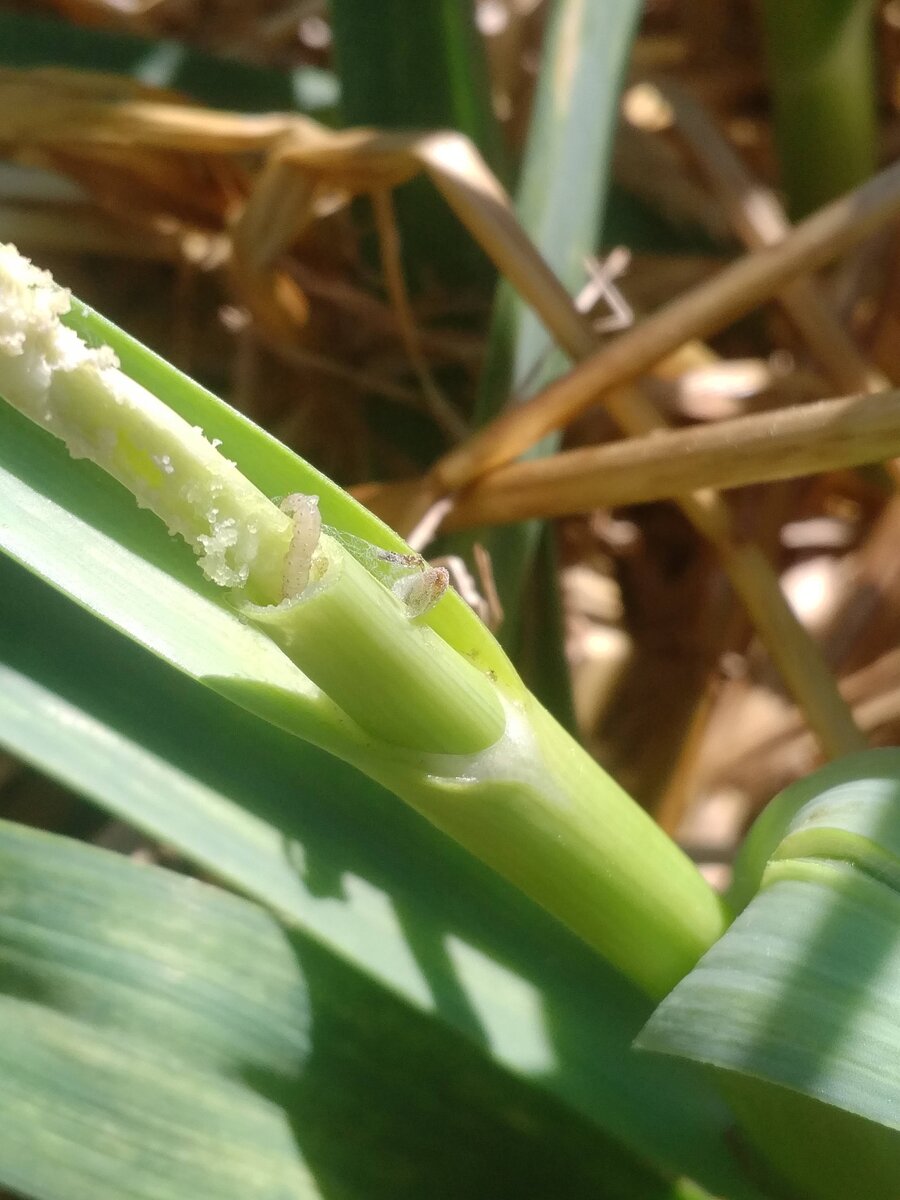
4. Your choice of tool can quickly dispatch the moth larva. If you don't want to use your fingers, a small stick, a gloved hand, or a pencil are all perfectly effective and organic insecticides.
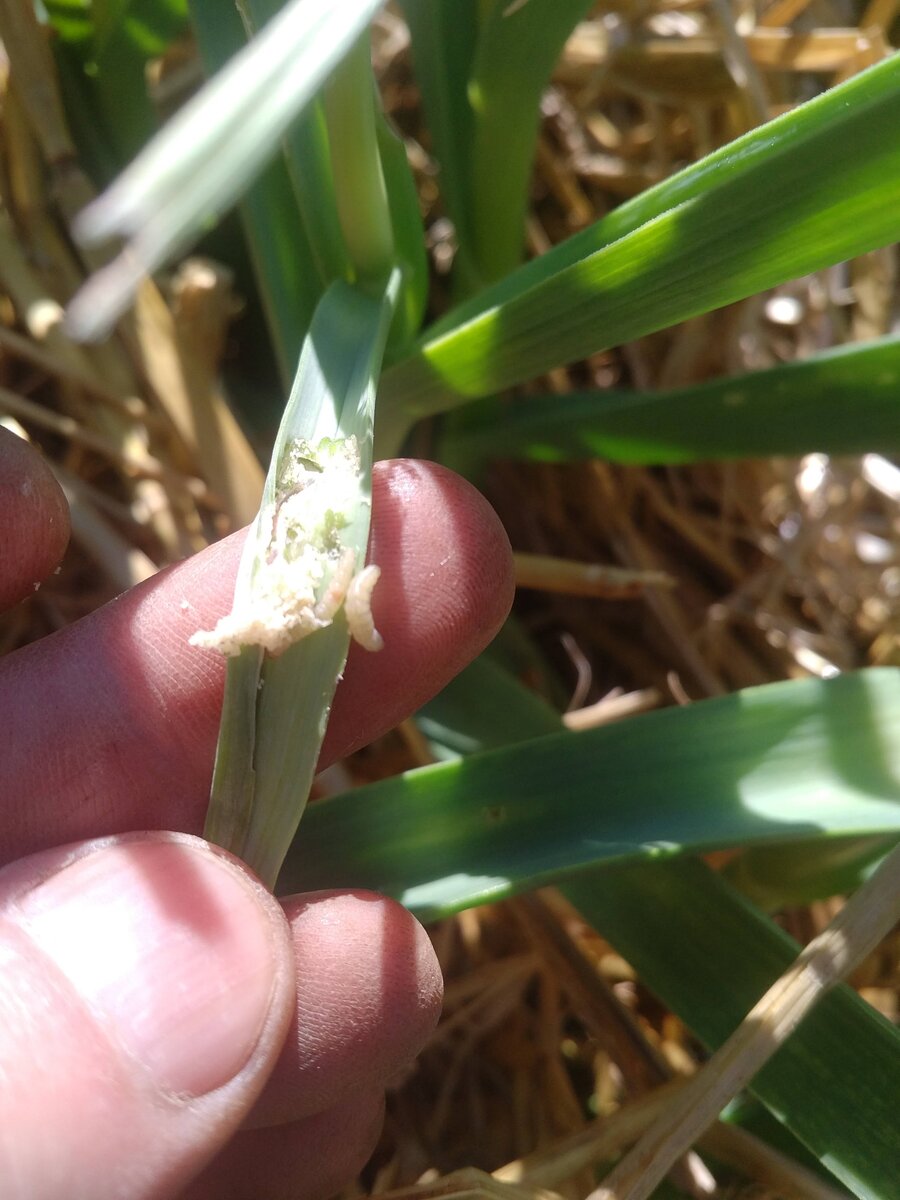
This moth chewed off part of the young garlic scape.
